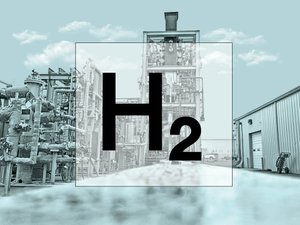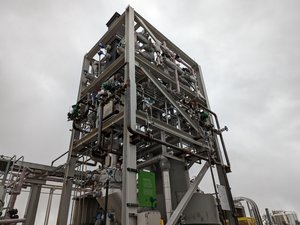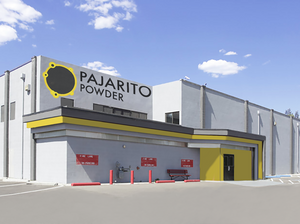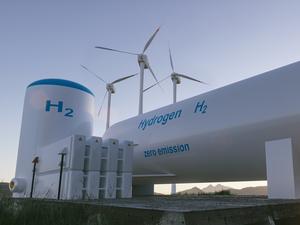Using hydrogen as a fuel source isn't necessarily a new thing. But a jumble of different ways to describe how the element can be produced, from confusing color schemes to complicated terminology, can make understanding the potential impact of hydrogen energy challenging.
So, to help explain hydrogen fuel production, Albuquerque Business First chatted with a pair of experts at New Mexico's Los Alamos National Laboratory — Duncan McBranch, the lab's hydrogen hub capture manager, and Rod Borup, Ph.D., the hydrogen and fuel cell technologies lab program manager.
This interview has been edited for brevity and clarity.
Albuquerque Business First: I've heard of gray hydrogen production, blue hydrogen production and green hydrogen production as signifiers for different ways to produce hydrogen. Could you walk through each of those ways to produce hydrogen and why they have those colors to go alongside them?
Duncan McBranch: One of the key issues with hydrogen production is carbon intensity, so how much carbon is released in the whole lifecycle of producing the hydrogen. People call that from "well to wheel" — you have to take into account every part of the production. We think it's important to get away from the colors of hydrogen discussion because it tends to put things in boxes that are misleading, and instead talk about overall carbon intensity and set targets for what the maximum carbon intensity could be and try to drive that carbon intensity down to zero over time. Of course, the other important component of hydrogen production is cost, and right now it's a lot cheaper to produce hydrogen from fossil fuels. Ultimately, the cleanest way is to produce it with electrolysis. I think what we're trying to encourage with our participation is that we choose the areas where hydrogen is most promising in the energy economy and drive the cost down over time to the cleanest we can get, but we should talk about carbon intensity as the thing that we control and not colors.
Rod Borup: Part of what's going on is that people are misusing the colors, and now we've got pink and turquoise as well, so it's been more confusing than what they wanted. From my perspective, the technical methods on how you're going to make hydrogen, I would divide them into water electrolysis — or water splitting — as one form. Taking hydrocarbon and then in one form or another reforming it or pyrolyzing it to make hydrogen is another. Or a high-temperature thermo-chemical cycle is a third. In those three categories, they can be similar but different. Like Duncan said, right now, the most cost-effective method of making hydrogen is by fossil fuels, and typically it's methane steam reforming. But they don't do anything with the [carbon dioxide] other than emit it, so that's not really the path that we want to go long term. It's probably going to be more fossil fuels with carbon capture and carbon sequestration so that you don't have the carbon emissions. In terms of electrolysis — that's water splitting — if you go back to high school chemistry, virtually everybody in high school chemistry does water electrolysis. You get twice as much hydrogen as oxygen by moles. We would like to, in terms of the country, use renewable electricity, then generate that hydrogen so you have no CO2 emissions. High-temperature thermo-chemical cycles is one of the ways you can tie it to nuclear energy, which is another way you can have hydrogen production with no CO2 emissions. You could either take the electricity made from a nuclear reactor for water electrolysis, or you can use the heat from a nuclear reactor and then do the thermo-chemical water splitting, which is a high-temperature cycle. One of the most cost-effective ways that people are looking at right now is methane pyrolysis. You come up with carbon black and then you use the carbon for what carbon is used for today, such as tires on your car or asphalt or a lot of other different applications. So when you have a stream with two different incomes, that right now is what they're projecting as the lowest cost.
What is the biggest challenge to rolling out more hydrogen production in the future? What is the biggest barrier to really scaling hydrogen production?
Borup: It has to be economically competitive with the processes we have today. You're not going to run yourself out of business if one technology is not cost competitive with another one. If you go out and buy hydrogen today, it's substantially more expensive than we know that we can make it at if we did it at scale. But you have to have production come up at the same time as the consumers come up. Maybe an analogy that you can think about is when they first came out with automobiles in the late 1800s, there was not a gas refilling infrastructure. The two grew up together. So, you have to have your production grow up with your consumption. That is really what the hydrogen hubs are aimed at — doing production, the distribution system and the consumption altogether.









